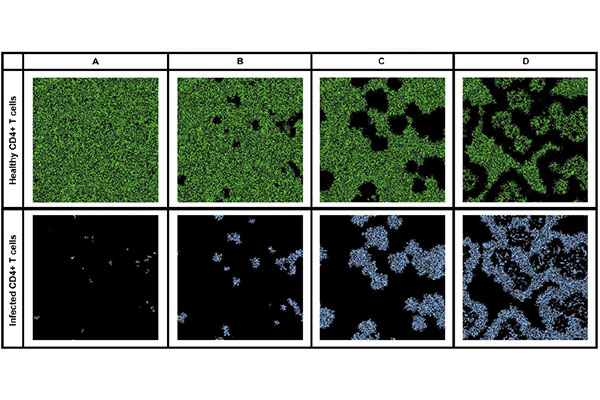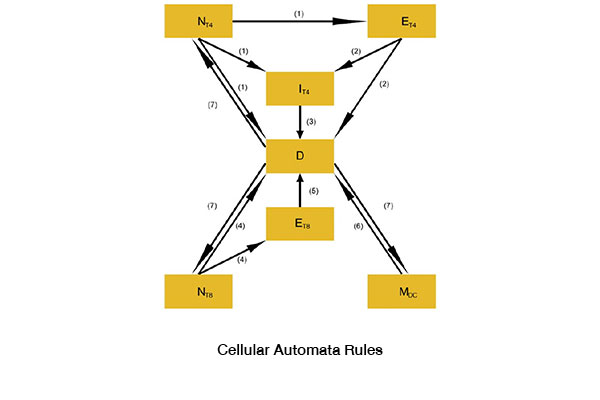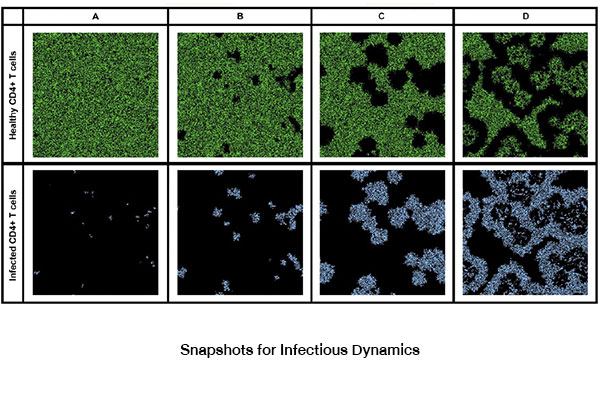Medical Modeling and Simulation to Develop a Stochastic Cellular Automaton Model: Effects of Cell – Mediated Immunity to Eradicate HIV – 1 Infection
Institute for Innovative Learning, Mahidol University



Medical Modeling and Simulation to Develop a Stochastic Cellular Automaton Model: Effects of Cell – Mediated Immunity to Eradicate HIV – 1 Infection
Institute for Innovative Learning, Mahidol University
Project Title:
Stochastic Cellular Automata Model for HIV – 1 Infection Dynamics
Research Title:
Medical Modeling and Simulation to Develop a Stochastic Cellular Automaton Model: Effects of Cell – Mediated Immunity to Eradicate HIV – 1 Infection
Researcher:
Dr.Monamorn Precharattana
We investigate the dynamics of HIV-1 infection on a lymphoid reservoir when the cell-mediated immunity, among the basic immune cell types associated with HIV-1 infection and generally present in the lymphoid organs, is play roles into the system. A two dimensional cellular automaton model incorporated the effects of cell-mediated immunity, i. e. the CD4+ T cells, Helper T cells and the CD8+ cytotoxic T lymphocytes (CTLs), thus is developed to represent the viral host interaction on a patch of lymphoid tissue. The quantities of the cell population and the spatiotemporal pattern of the infection will be investigated by comparison with the results from clinics.
We expected that our proposed model can open the view of knowledge for dynamics of HIV-1 infection in a lymphoid reservoir which could be able to help answer questions involved in the biological mechanisms of the virus-host defenses at local community or inspire other related problems in further.


Publishing:
• Precharattana M, Triampo W. Modeling dynamics of HIV infected cells using stochastic cellular automaton. Physica A: Statistical Mechanics and its Applications. 2014 Aug 1;407:303-11.
• Precharattana M, Nokkeaw A, Triampo W, Triampo D, Lenbury Y. Stochastic cellular automata model and Monte Carlo simulations of CD4+ T cell dynamics with a proposed alternative leukapheresis treatment for HIV/AIDS. Computers in biology and medicine. 2011 Jul 1;41(7):546-58.
Key Contact Person:
Dr.Monamorn Precharattana
Institute for Innovative Learning, Mahidol University